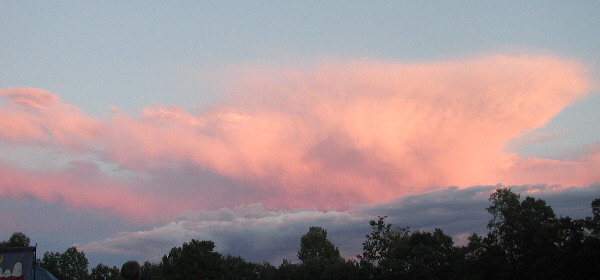
This page updated 21 September 2001
Below are some photos I took while attending CSP11. ASNH is to be congratulated for another great star party! The weather was crisp and clear on both nights (and this is about the 4rth year in a row with good weather on at least one of the two nights). The mood was not quite the same this year due to the tragic events that took place earlier in the week. However, CSP 11 was a welcome diversion from the sadness.
Also note: if some of the photos below appear blank, it may be due to memroy limitations of your system. To force the images to load, place the cursor over the blank box, right click, and select "show picture". The photos have been verified to be present on the server, so that is not the problem if things fail to load!

Some beautiful clouds depart in the southeastern sky on Friday evening.
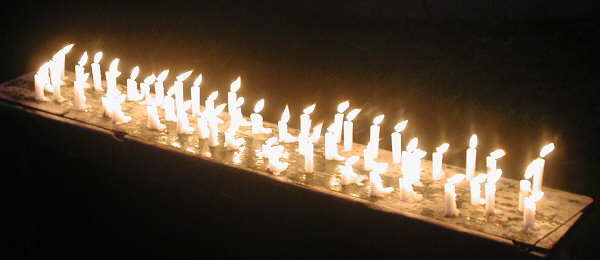
Candles lit in memory of those who were lost in the tragic events of 11 September.

Viewing the Sun through a classic Celestron 14 telescope.
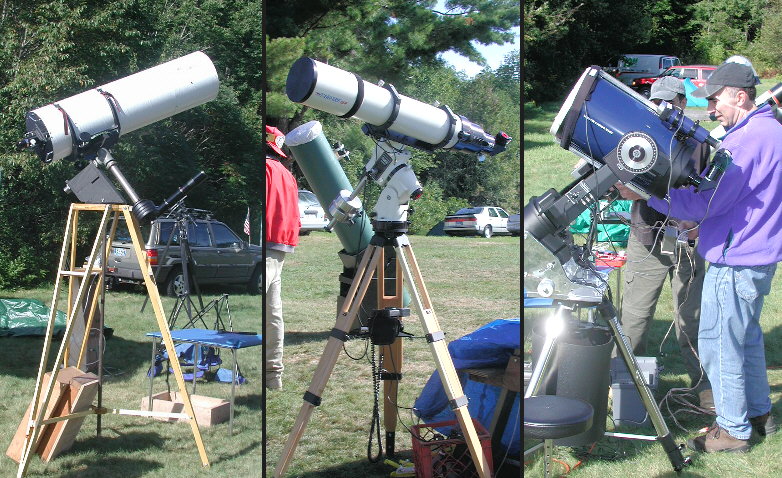
A sampling of scopes: Dick Parker's 12" F20 Cassegrain, Dan Carnevale's (?) Astrophysics 6 inch refractor, and a 10 inch Meade LX200 with a custom wedge.
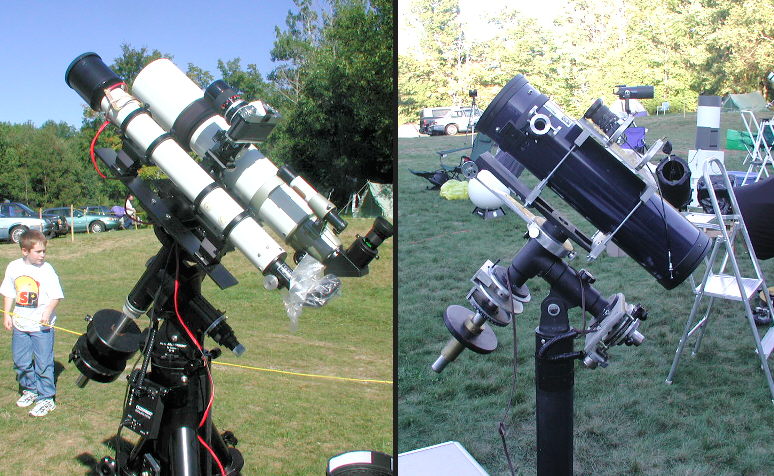
Joe Roberts' astrophotograhy setup (Vixen 102 ED Refractor w/ 60mm guidescope and piggyback camera mount) This rig was used to take most of the astrophotos in this report. At right is ________'s 6" Newtonian also decked out for some astrophotography.
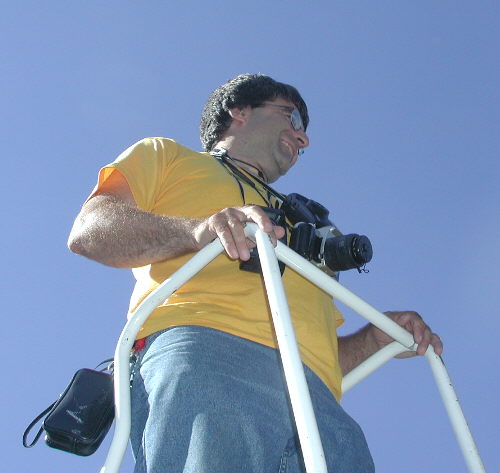
Al Washburn of the ASNH preparing for annual group photo duties.

CSP Group Photo (I have a number of high resolution images of this shot if you are interested).

A view of the CSP 11 Main Observing Field.
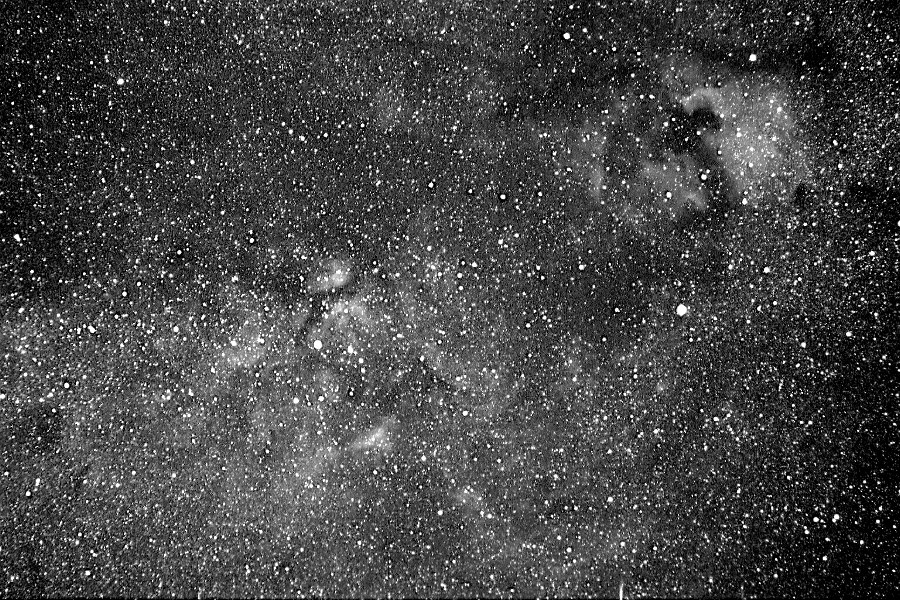
A red component image of the North American Nebula, Pelican Nebula, and and Gamma Cygnus region. 10 minute exposure with a 135mm F2.8 lens on Kodak Royal Gold 400 film.

The Great Galaxy in Andromeda; 10 minute exposure with a 135mm F2.8 lens on Kodak Royal Gold 400 film. Both companion galaxies are also visible. Blue halos around stars are because the camera lens does not focus UV light the same as visible light (this is a problem with most lenses unless a special filter is used).
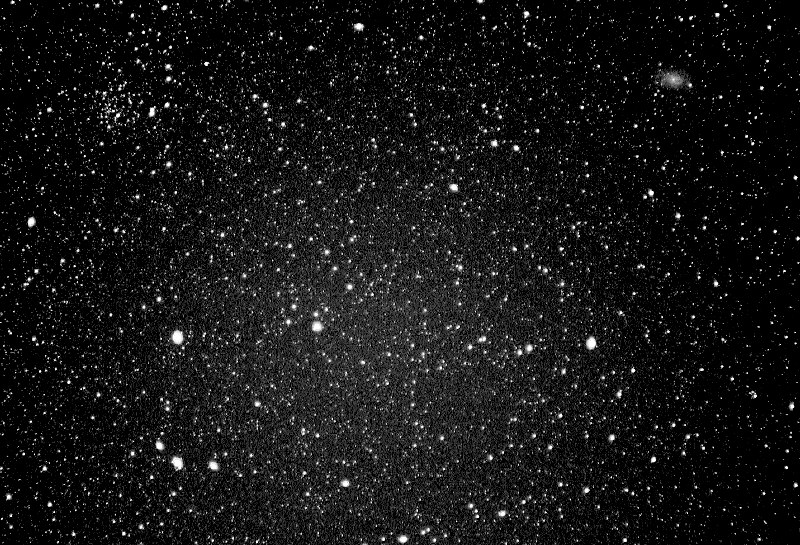
A red component image of Triangulum. NGC 752 open cluster and M33 are easily visible. 10 minute exposure with a 135mm F2.8 lens on Kodak Royal Gold 400 film.
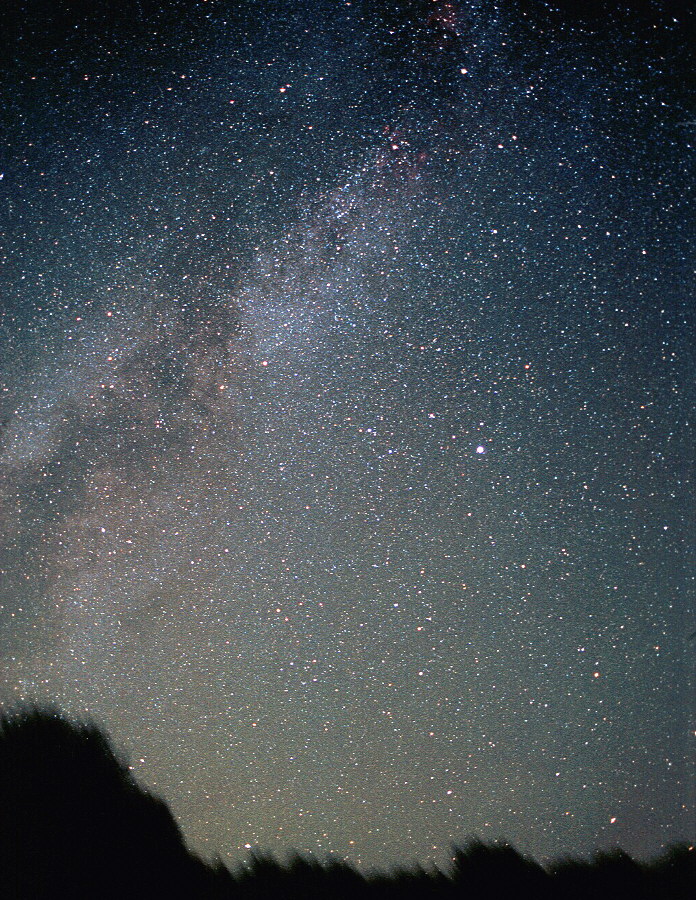
A wide angle view of the western sky. Cygnus and Lyra are the two most prominent constellations visible. Some darkening occurs at the corners of the image due to vignetting. 7 minute exposure with a 28mm F2.8 lens on Kodak Royal Gold 400 film.
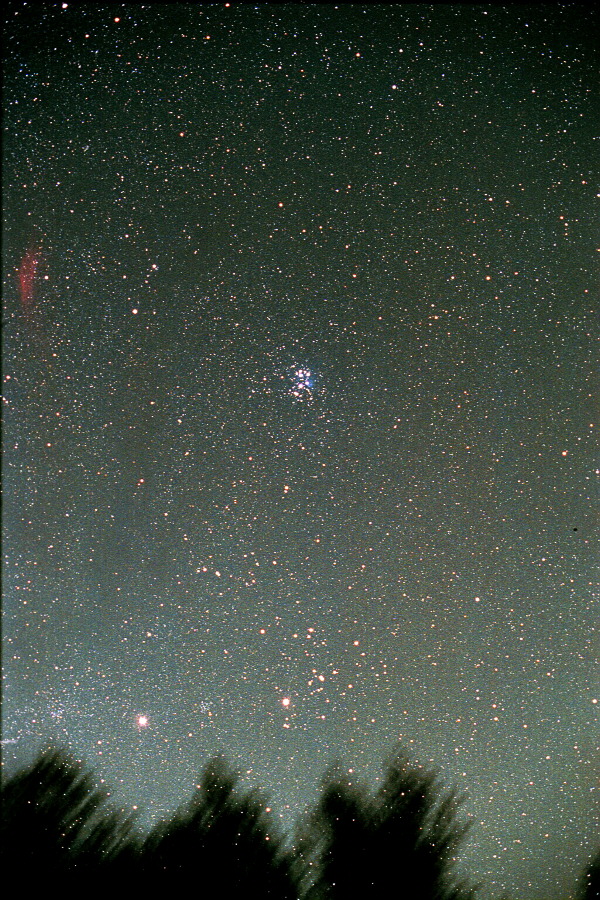
A view of the eastern sky in the morning. The Pleiades are obvious, and several other clusters in Taurus are visible. Also visible along the left edge of the image is the California Nebula. Elusive visually (unless you use an H-beta filter), this nebula actually is rather easy to pick up photographically (assuming you use a film with good red sensitivity). The bright "star" near the Hyades is Saturn. 7 minute exposure with a 50mm F2.8 lens on Kodak Royal Gold 400 film.
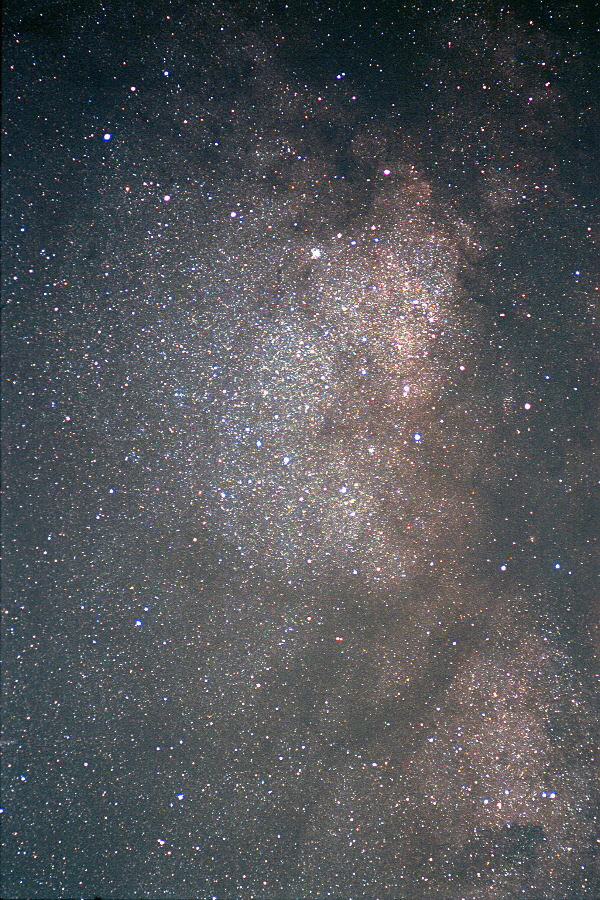
The Scutum Star cloud. M11 is visble along with significant dust structure. 7 minute exposure with a 135mm F2.8 lens on Kodak Royal Gold 400 film.
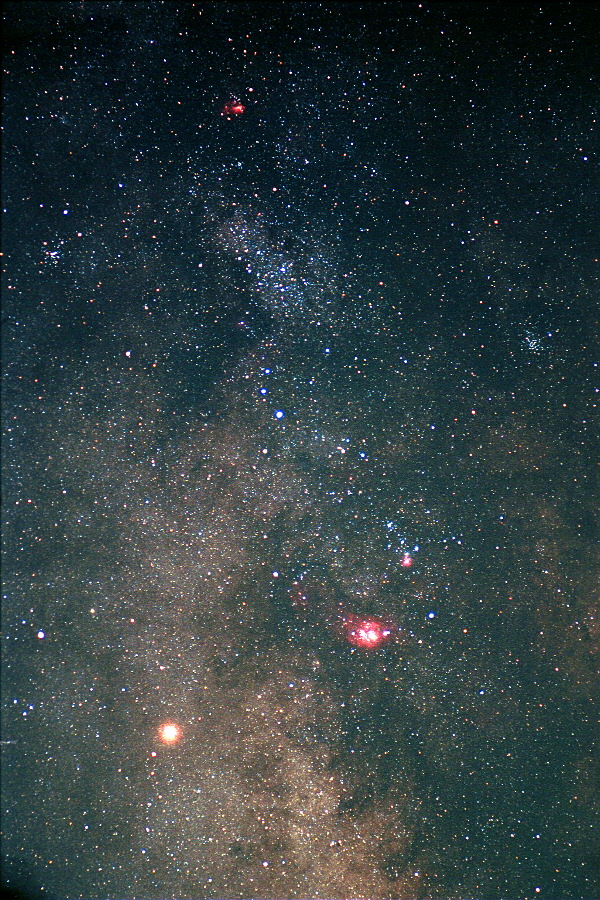
Southern Milky Way with Mars. Numerous Messier objects are visible in this mild telephoto shot. The Lagoon Nebula is the most obvious, and the Omega (Swan) Nebula is also seen near the top of the image. M22 is the reddish "spot" to the upper left of Mars. 7 minute exposure with a 135mm F2.8 lens on Kodak Royal Gold 400 film.